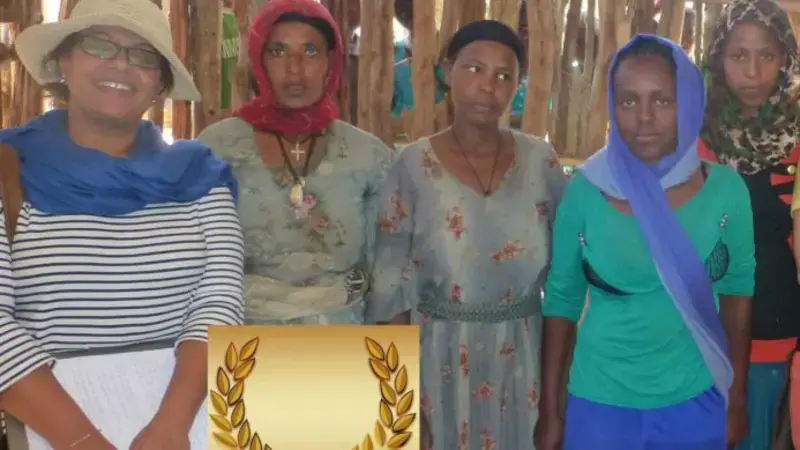Scientist’s fuel-efficient 'stove-for-work' program in Ethiopia protects trees

BY JACK DURRELL
Growing up in Ethiopia, Bezaiet Dessalegn, ICARDA scientist, became concerned about the degraded landscapes around her and took some giant steps to forge change.
Ethiopia has experienced significant deforestation over the past century – driven by rapid population growth, the expansion of agricultural land, and the unsustainable demand for wood, often as a source of fuel for cooking and heating. The World Bank suggests that less than 3 percent of the country’s forests remain untouched.
A researcher at the International Center for Agricultural Research in the Dry Areas (ICARDA) since 2011, and previously a development professional with experience gained on several food security initiatives, Bezaiet, a graduate of Clark University and Purdue University in the United States, is well-versed on the challenges facing Ethiopia’s rural communities.
She knew that fuel-efficient stoves could help to reverse deforestation. The challenge was finding a model that was affordable and accessible for rural households.
After researching several models Bezaiet and her colleagues from ICARDA and the Gondar Agricultural Research Center (GARC) eventually identified the “Mirt” stove, subsequently initiating local production and a stove-for-work program that gave stoves to local women once they had completed planned conservation work, including afforestation and building soil conservation structures.
Research published in the academic journal Land suggests that Mirt stoves could generate energy efficiency gains and reduce household demand for firewood by almost 40 percent.
They also bring health benefits as they offer an alternative to open fires or stoves that lack adequate ventilation, which according to the World health Organization (WHO) cause illnesses such as pneumonia, heart disease and lung cancer, and the deaths of some 4.3 million people worldwide every year.
“Conventional stoves require women to spend hours collecting firewood, crop residue and animal dung,” says Bezaiet. “They also expose women and young children to smoke and open flames.”
Energising Development, a multi-donor partnership that promotes sustainable access to energy in developing countries, estimates that Mirt Stoves can reduce carbon monoxide emissions and particulate matter pollution by up to 90 percent and 30 percent respectively.
Farmers could even see an improvement in soil fertility – since the manure — often used as fuel — saved by using these fuel-efficient stoves could instead be applied to fields.
With support from the CGIAR Research Program on Water, Land and Ecosystems, Bezaiet introduced the stove to communities in the Gumera-Maksegnit watershed in the Amhara region, some 700 kilometers north of the capital Addis Ababa, which experienced a 19 percent decline in forest cover between 1986 and 2007, according to figures published by ICARDA and GARC.
The initiative prioritized outreach to women. In order to lower production costs local women were organized into a business cooperative and given training so they could make the stoves locally. The $8 they charged covered the costs of raw materials, transportation and labor.
Preliminary analyses have identified several important impacts: reduced demand for firewood; enhanced soil fertility – because of reforestation, reduced erosion and the availability of more manure; and higher incomes for women.
Some 800 households in the Gumera-Maksegnit watershed eventually adopted the stove and the success of the stove-for-work program offers a model for other regions struggling to reverse deforestation.
On International Women’s Day, Bezaiet Dessalegn should be honored as a ‘Landscape Laurel’ for her efforts to enhance the accessibility and affordability of fuel-efficient stoves – removing a major bottleneck to the technology’s wider adoption and promoting a critical tool in the fight against deforestation.
Her efforts continue through a project in Egypt, which explores shifting natural resource management practices over the past 10 years to identify how farmers’ understanding of good management practices evolved over time, and the implication of these practices.
This article originally appeared in Landscape News. Check Viewpoint all week for more laurel recipients.